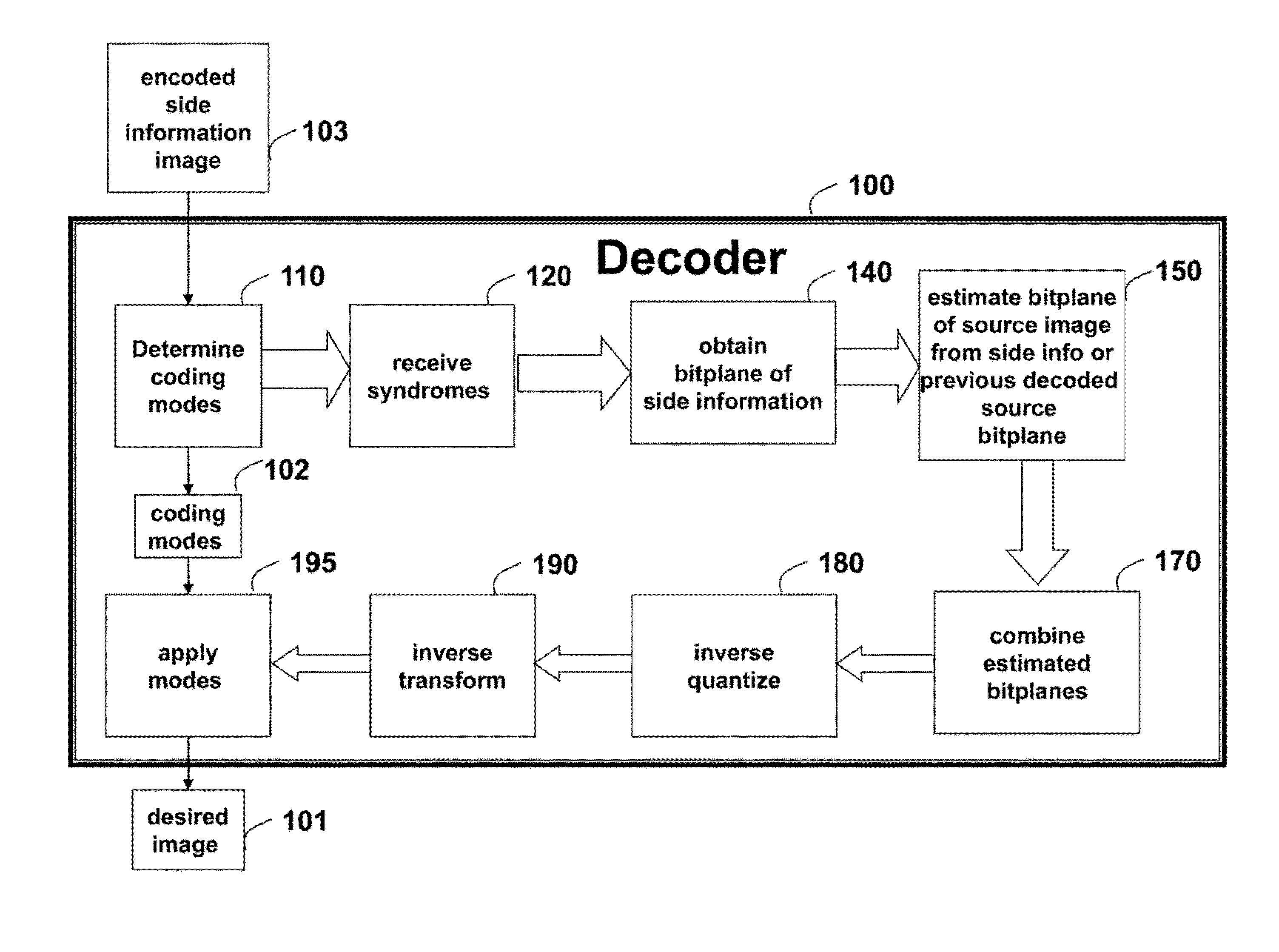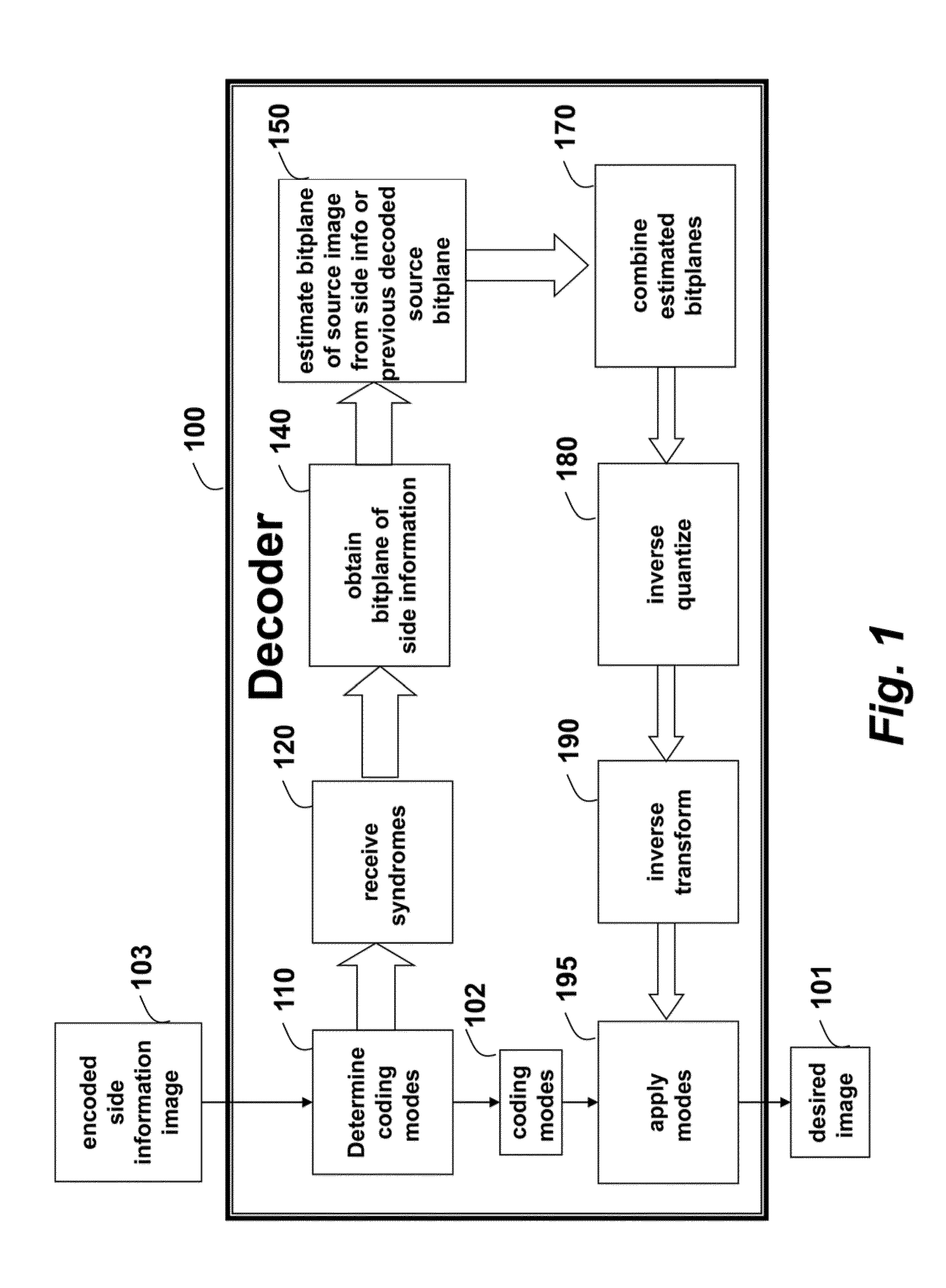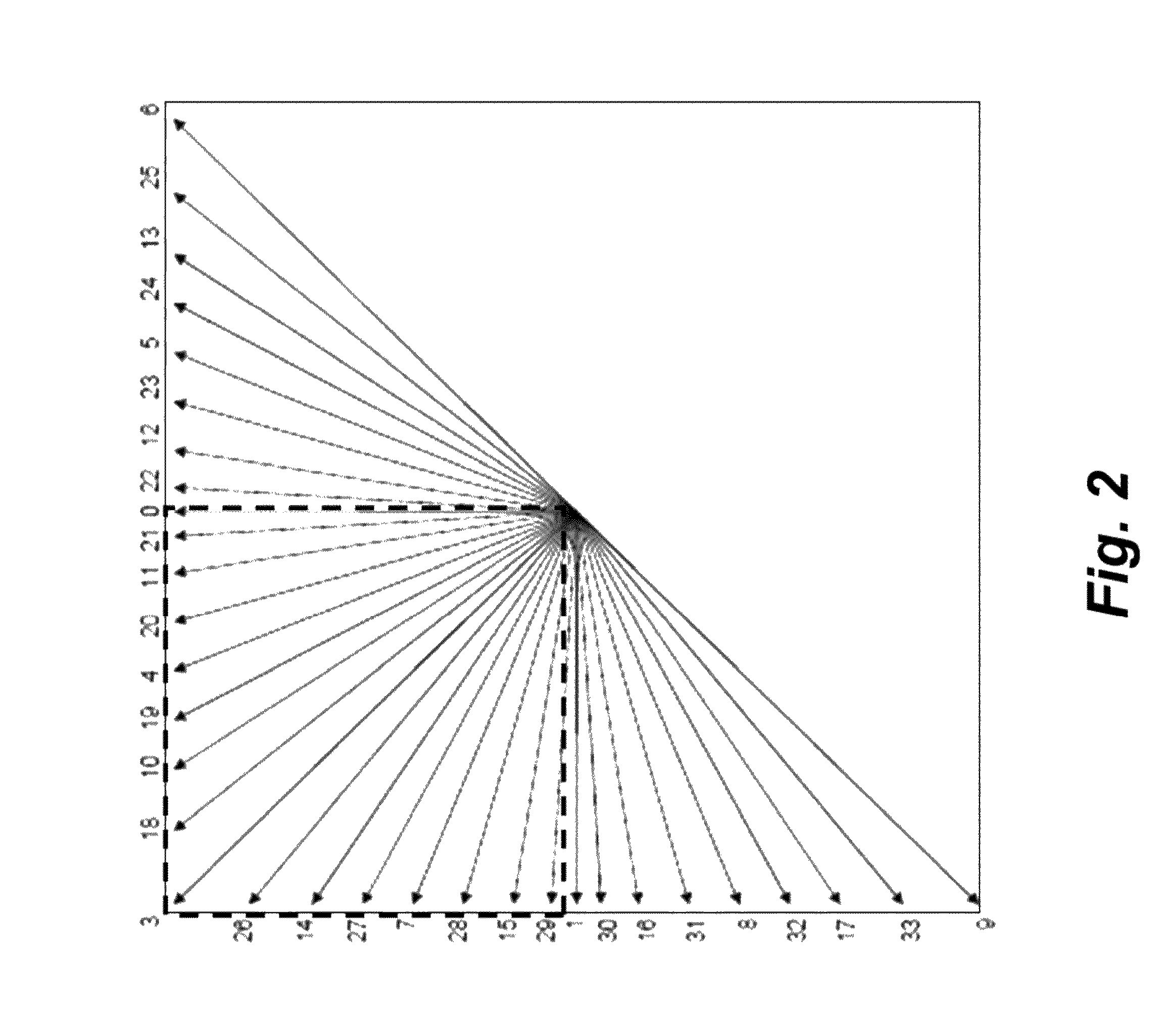Method for improving compression efficiency of distributed source coding using intra-band information
a distributed source and information technology, applied in the field of distributed source coding, can solve problems such as data compression, and achieve the effects of improving the compression efficiency, and improving the compression efficiency
- Summary
- Abstract
- Description
- Claims
- Application Information
AI Technical Summary
Benefits of technology
Problems solved by technology
Method used
Image
Examples
Embodiment Construction
Detailed Method Overview
[0018]FIG. 1 is a flow diagram of a distributed source coding (DSC) method for recovering an estimate of a desired image 101 from an encoded input image. It is to be understood that certain coding modes 102 were chosen while encoding the input image. The method can operate in a decoder 100. The decoder can be implemented, in part, using a processor connected to memory and input / output interfaces connected by buses.
[0019]These coding modes are first determined 110 at the decoder. In some embodiments, the coding modes represent the intra and inter prediction coding modes inherited from encoded side information image 103. In other embodiments, the coding modes are independently determined from the input image, without consideration for the coding modes used in the side information image.
[0020]From an encoder, storage device or encoded bit stream, the decoder receives 120 syndrome bits, or parity bits applied to bitplanes of quantized transform coefficients of th...
PUM
 Login to View More
Login to View More Abstract
Description
Claims
Application Information
 Login to View More
Login to View More - R&D
- Intellectual Property
- Life Sciences
- Materials
- Tech Scout
- Unparalleled Data Quality
- Higher Quality Content
- 60% Fewer Hallucinations
Browse by: Latest US Patents, China's latest patents, Technical Efficacy Thesaurus, Application Domain, Technology Topic, Popular Technical Reports.
© 2025 PatSnap. All rights reserved.Legal|Privacy policy|Modern Slavery Act Transparency Statement|Sitemap|About US| Contact US: help@patsnap.com



